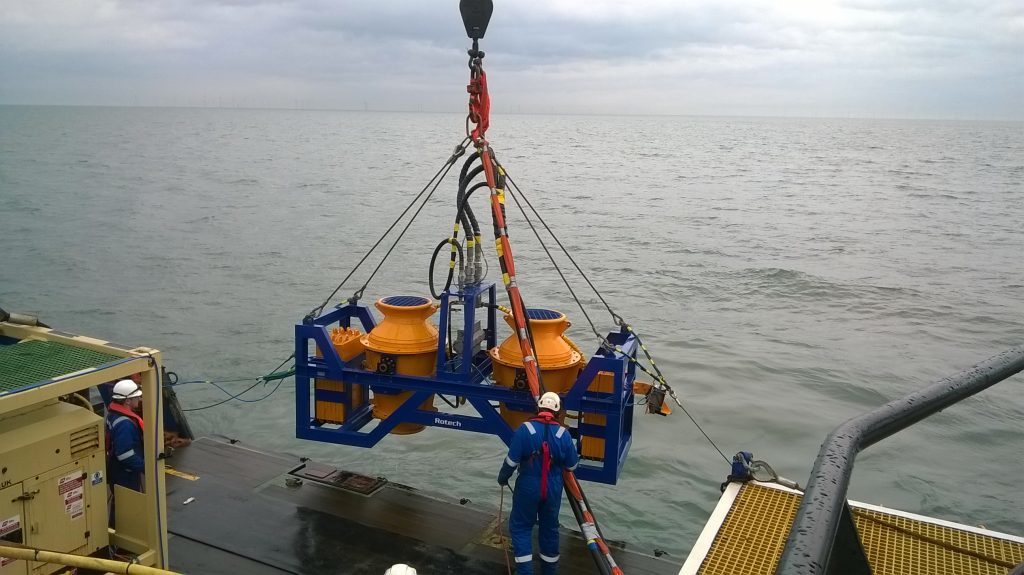
The doors of Rotech Group’s expansive industrial units in Mastrick are open, emitting the metallic clanking sounds of a busy fabrication facility.
Economic conditions outside the doors might be gloomy, but inside the company has taken the next step in re-establishing itself as a world-beating designer of new and improved tools used to dig subsea trenches.
Earlier this month, four of the company’s directors led a management buyout of the group. The move saw three of the group’s directors, Stephen Cochrane, Martin Graham and Steve Aitken, take up a stake from Ken Stewart, who had himself led a buyout of the firm in the 1994. Ken’s younger brother, Donald, also took part on the recent MBO.
In 2011 Rotech actually sold off its subsea business – with its old range of excavation equipment and 66 Aberdeen-based employees – to Reef Subsea UK, part of a Norwegian group.
But last year Stavanger-based Reef Subsea AS became one of the first major casualties of the oil price downturn when it filed for bankruptcy. The move pressaged a wave of collapses of UK-based subsidiaries.
Eventually the equipment – Rotech patented designs known as T4000 and T8000 mass flow excavators – was bought from the administrators by James Fisher and Sons.
But now Rotech has the RS range – also patented – which Mr Stewart, who designed them, reckons are a far better bet.
Mr Stewart said: “We had the option of going in and buying that stuff back ourselves. We chose not to – partly because in that three year period we had been looking at the technology and we did have on the back burner some ideas about developing the next generation of mass excavation. We designed something better.”
The company’s initial designs were a form of dredge for digging subsea trenches which used a jet of water to create a trench. The new tools have at least twice as much power – making them more efficient and targeted – as well as being suitable for use in cabling for the offshore wind sector, as well as decommissioning.
“All that equipment was designed in the last millennium. It was best mass flow excavation kit available at the time. We created a world wide company with offices in Signapore, Australia, Hosuton, Mexico when the company was sold.”
But with new tools to hand, the company
designed and built the RS1 and RS2, variations on the tools to digs trenches suitable for pipelines and cables.
The “twin” RS2 is ideal for decommissioning subsea pipework. Current thinking in the decom world is that subsea pipework will be lowered in a deeper trench then buried, avoiding being caught on any fishermen’s nets that might pass over. Rotech’s dual headed excavation tool blows pressured water on both sides of the pipe in order to dig a deeper trench under it.
What the company must do now is distinguish their new and improved versions with those the market knew so well before.
“We haven’t taken our old design and tweaked it. We started from a completely blank sheet of paper and started from the ground up,” says Mr Stewart.
Mr Cochran adds: “We have learned from the over 350 projects that the original Rotech Subsea carried out. The lessons learned in those campaigns were instrumental in the new technology.
“We want to take the business global again. We are being pulled into those regions. Clients want to see the new solutions. Don and the engineering team are building bespoke systems tailored for different problems offshore, based on the RS1 and RS2.”
The company is currently set to start on a trial pre-commissioning clearance for a major offshore wind farm off the coast of Norfolk.
The firm also recently showcased its kit at the Global Offshore Wind 2016 exhibition in Manchester.
The aim is to grow the business – mainly organically.
“We have all the capital we need for our current expansion plans,” says Mr Stewart. “It will be completely internally funded organic growth both east and west.”
Mr Cochran adds: “We are surviving just now because we are able to work in the renewables sector. We are ready for oil and gas which will hopefully pick up in 2017/18. And we are abreast of what is going on in decommissioning.”
Mr Stewart, a computer science graduate and later a PhD in mechanical engineering from Aberdeen University, joined the firm when his brother took it over.
Mr Cochrane, who studied industrial design and project management at Robert Gordon University. He spent a stint offshore but said “it wasn’t for me”.
He initially met Rotech in 2006 at an exhibition and liked it so much he bought a stake in the company – eventually.
The collapse of Reef, while a sad event, has seen some of the people who had gone to the firm as part of the sale transaction come back home.
In a round about way, Mr Cochrane is one of those. After the transaction he left to join another firm. But given half a chance to come back to Rotech and get some skin in the game through the MBO, he jumped at the chance.
“It was always a dream of mine to be part of something.
“I’m honoured and grateful to Ken to give us the opportunity to take part in the MBO. It has been a long 18 months, but we have got there. It is exciting to see where we can take this business in the next five to 10 years.”
